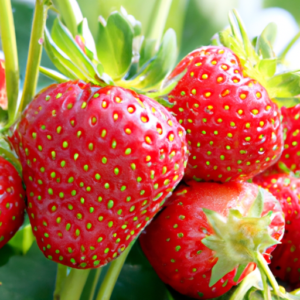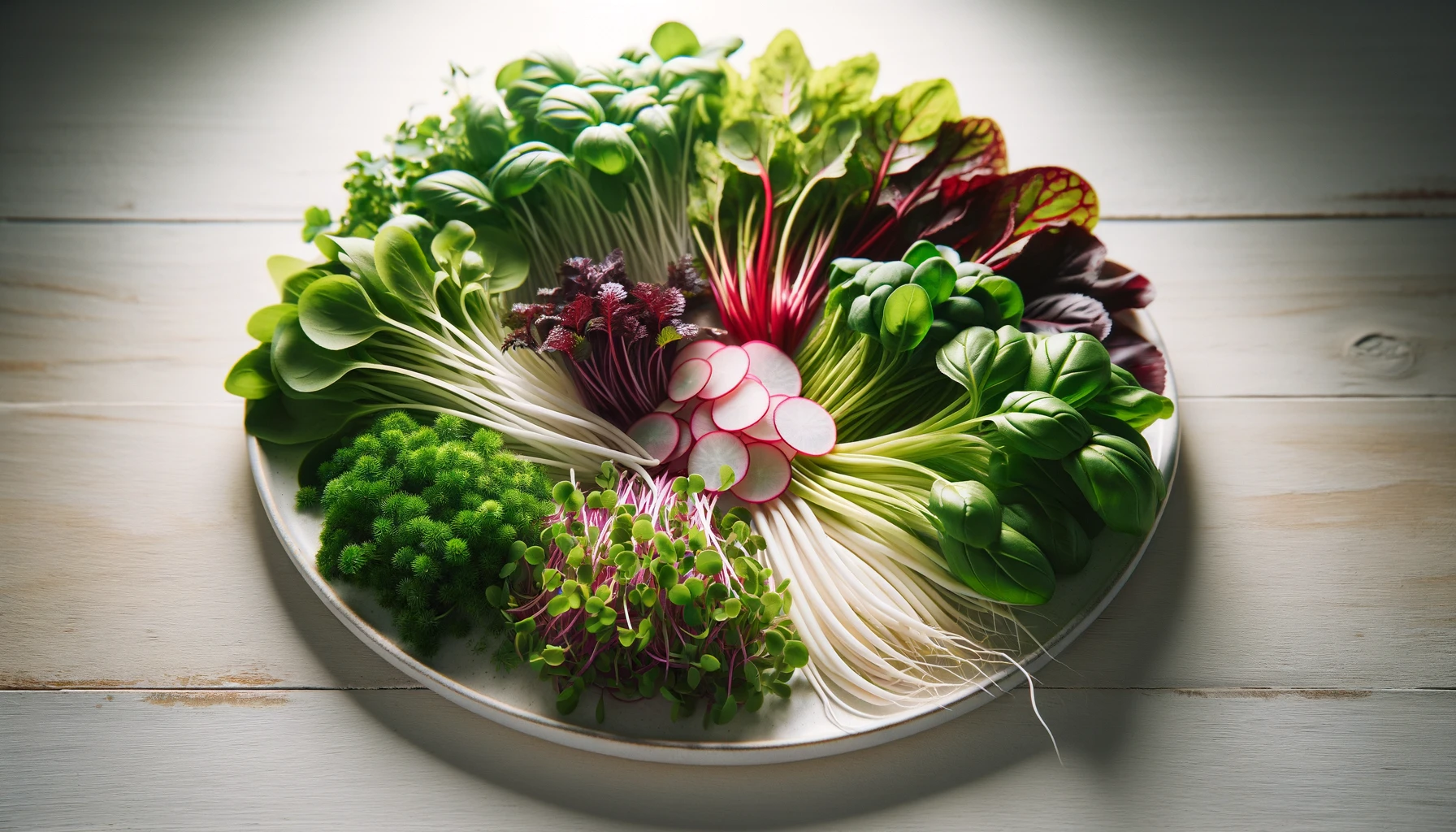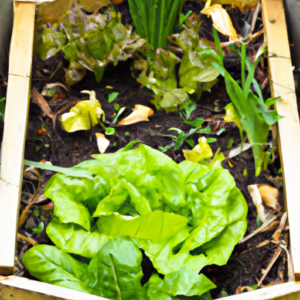So you’ve decided to try your hand at growing strawberries. Well, you’re in for a treat! This article will provide you with all the essential steps and tips on how to successfully cultivate your very own strawberry plants. From selecting the right variety, preparing the soil, planting, caring for your plants, and dealing with common issues, this comprehensive guide will set you on the path to a bountiful harvest of delicious, homegrown strawberries. Get ready to dig in and discover the secrets to growing strawberries like a pro!

Choosing the right strawberry variety
When it comes to growing strawberries, one of the first things you need to consider is the variety that will thrive in your specific climate and location. Different strawberry varieties have different temperature and soil requirements, so it’s important to choose one that is well-suited to your area.
If you live in a cooler climate, you may want to consider planting June-bearing strawberries. These varieties produce a large crop of fruit during a short period in late spring or early summer. On the other hand, if you live in a warmer climate, you might opt for everbearing varieties that produce fruit throughout the growing season.
Researching the different available options is crucial when choosing a strawberry variety. Consider factors such as flavor, disease resistance, and fruit size to find the perfect variety for your garden. It’s a good idea to consult with local nurseries or gardening experts who can provide guidance on which varieties are best suited for your specific location.
Preparing the soil
Before planting strawberries, it’s essential to prepare the soil to provide the optimum growing conditions for these delicious fruits. Here are some steps to follow when preparing the soil:
- Find a well-draining location: Strawberries prefer soil that drains well and doesn’t become waterlogged. Choose a spot in your garden that doesn’t retain water after heavy rain.
- Test the soil pH: Strawberry plants thrive in slightly acidic soil, with a pH range of 5.5 to 6.5. Test your soil using a testing kit available at garden centers or consult a local agricultural extension office for assistance.
- Amend the soil with organic matter: Enrich your soil by adding organic matter, such as compost or well-rotted manure. This improves the soil structure, fertility, and moisture-retaining capacity.
- Remove any weeds or grass: Clear the area of any weeds or grass before planting to prevent competition for nutrients and water.
- Loosen the soil with a garden fork: Gently loosen the soil with a garden fork to improve its structure and root penetration. Be careful not to damage any existing roots or plants nearby.
By taking these steps, you are providing your strawberry plants with a healthy foundation to grow and thrive.
Planting strawberries
Now that your soil is prepared, it’s time to plant your strawberry plants or runners. Here’s what you need to know before getting started:
- Choose healthy strawberry plants or runners: Look for plants with green leaves and strong root systems. Avoid plants that show signs of disease, wilting, or yellowing leaves.
- Decide on the planting method: You can choose between bare-root plants or container-grown plants. Bare-root plants are economical and easy to plant, while container-grown plants offer the advantage of being established and ready to produce fruit sooner.
- Plant in spring or fall: Depending on your climate and the type of strawberry variety you’ve chosen, planting can be done in either spring or fall. Check the recommended planting time for your specific variety and region.
- Follow proper spacing guidelines: Proper spacing is crucial for strawberry plants to receive adequate sunlight and airflow. Leave about 18-24 inches of space between plants and maintain rows that are about 3-4 feet apart.
- Ensure the crown is above the soil level: Be careful not to bury the crown of the strawberry plant when planting. The crown should sit just above the soil level to prevent rotting.
- Water the plants thoroughly after planting: Once the plants are in the ground, water them thoroughly to help settle the soil around the roots. This helps to establish good root growth and minimize transplant shock.
By following these planting guidelines, you are setting your strawberry plants up for success and ensuring a healthy start to their growing journey.

Providing appropriate sunlight and temperature
Strawberries require an adequate amount of sunlight and temperature to produce abundant and flavorful fruit. Here are some tips to help you provide the right environment for your strawberry plants:
- Place the strawberry plants in a sunny area: Find a spot in your garden that receives full sun for at least 6-8 hours a day. Strawberries thrive in bright sunlight.
- Ensure at least 6-8 hours of direct sunlight: Direct sunlight is essential for photosynthesis and fruit ripening. Without enough sunlight, strawberry plants may produce smaller or fewer fruits.
- Protect the plants from excessive heat: While strawberries love sunlight, excessive heat can be detrimental to their growth. Protect your plants from scorching temperatures by providing shade during the hottest part of the day, especially in midsummer.
- Provide shade during scorching summer days: If you live in an area with intense summer heat, consider using shade cloth or constructing temporary shade structures to shield your strawberry plants from the sun’s intensity. This can help prevent dehydration and stress.
By ensuring your strawberry plants receive the appropriate amount of sunlight and temperature, you are helping them thrive and produce an abundant harvest.
Watering and irrigating
Proper watering and irrigation are crucial for the health and productivity of your strawberry plants. Here are some tips to help you water your strawberries effectively:
- Water consistently and evenly: Strawberries need consistent moisture, especially during their fruiting season. Ensure you water the plants deeply to encourage deep root growth while avoiding waterlogged conditions.
- Avoid over-watering or allowing the soil to become dry: Overwatering can lead to root rot, while letting the soil dry out can result in stress and reduced fruit production. Find the balance by monitoring soil moisture levels and adjusting your watering schedule accordingly.
- Consider using a drip irrigation system: Drip irrigation is an efficient way to water strawberries as it delivers water directly to the plants’ root zones without wetting the foliage. This minimizes the risk of fungal diseases and conserves water.
- Mulch the soil to retain moisture: Apply a layer of organic mulch, such as straw or wood chips, around the base of the strawberry plants. This helps retain soil moisture, prevents weed growth, and keeps the fruits clean.
- Water in the morning to prevent fungal diseases: Watering in the morning allows the foliage to dry quickly, reducing the risk of fungal diseases. Avoid overhead watering, as wet leaves can promote the development of diseases like gray mold.
By following these watering tips, you are ensuring your strawberry plants receive the right amount of moisture to thrive and produce juicy, delicious fruits.
Feeding and fertilizing
Proper feeding and fertilizing are vital for the healthy growth and fruit production of strawberry plants. Here are some guidelines to help you feed and fertilize your strawberries:
- Apply a balanced fertilizer before planting: Before planting your strawberries, incorporate a balanced fertilizer into the soil following the package instructions. This provides the plants with essential nutrients to support their initial growth.
- Fertilize again after the first harvest: Strawberries benefit from a second round of fertilizer application after the first harvest. This replenishes nutrient levels in the soil and promotes healthy growth for the remainder of the season.
- Use organic fertilizer or compost for healthy growth: Organic fertilizers, such as compost or well-rotted manure, are excellent choices for strawberries as they provide slow-release nutrients and improve the soil structure.
- Follow package instructions for proper application: Different fertilizers may have specific application rates and methods. Follow the instructions provided by the manufacturer to ensure proper dosage and avoid over-fertilization.
- Avoid excessive use of nitrogen-based fertilizers: While strawberries require nitrogen, excessive nitrogen can lead to excessive foliage growth at the expense of fruit production. Use nitrogen-based fertilizers sparingly or choose fertilizers with a lower nitrogen content.
By feeding and fertilizing your strawberry plants appropriately, you are providing them with the necessary nutrients for vigorous growth and a bountiful harvest.
Controlling pests and diseases
Like all plants, strawberries can fall victim to pests and diseases. However, there are several organic methods you can use to control and prevent these issues:
- Inspect plants regularly for signs of pests or diseases: Regularly check your strawberry plants for any signs of pests, such as aphids or mites, or diseases like powdery mildew or leaf spot. Early detection allows for prompt action.
- Use organic pest control methods whenever possible: Opt for organic pest control methods, such as handpicking larger pests, introducing beneficial insects, or using natural sprays like neem oil or insecticidal soap. This minimizes harm to beneficial insects and reduces chemical exposure.
- Remove any infected or damaged plants immediately: If you spot any plants showing signs of disease or severe pest infestation, remove them from the garden promptly. This helps prevent the spread of the issue to nearby plants.
- Protect plants from birds with netting or scare tactics: Birds are notorious for feasting on ripe strawberries. Protect your fruits by covering the plants with bird netting or using scare tactics like reflective tape or fake predators.
By practicing vigilant pest and disease control measures, you are safeguarding your strawberry plants and ensuring a healthy and pest-free crop.
Pruning and maintaining plants
Proper pruning and maintenance of strawberry plants are essential for promoting healthier growth and maximizing fruit production. Here are some tips to help you maintain your strawberry plants:
- Remove old or damaged leaves regularly: Prune off any old or damaged leaves throughout the growing season. This helps improve airflow and reduce the risk of diseases.
- Pinch off runners for better fruit production: Runners are those long, thin stems that emerge from the main plant. While they allow for vegetative reproduction, they can also divert energy away from fruit production. Pinch off these runners to encourage stronger fruiting.
- Thin out crowded plants to improve air circulation: Overcrowded plants can hinder air circulation, promote disease development, and reduce overall fruit quality. Thin out crowded plants by removing weaker or excess ones to create adequate spacing.
- Prune after the last harvest for a better yield next year: After the final harvest of the season, prune your strawberry plants to remove any remaining foliage and runners. This allows the plants to focus on energy storage, resulting in healthier plants and increased fruit production the following year.
By implementing these pruning and maintenance practices, you are ensuring the longevity and productivity of your strawberry plants.
Harvesting strawberries
After all your efforts, it’s time to enjoy the fruits of your labor! Here’s how to properly harvest your strawberries:
- Watch for ripe fruits with vibrant color: Ripe strawberries will have a deep red color and will easily detach from the plant with a gentle tugging motion. Avoid picking underripe or overripe fruits.
- Pick strawberries in the morning when cool: Harvest your strawberries in the early morning when the temperatures are cooler. This helps preserve their quality and prevents wilting.
- Gently twist or cut the stem: To harvest the strawberries, gently twist or cut the stem just above the fruit. Avoid pulling or yanking, as this can damage the plants or bruise the fruits.
- Handle fruits carefully to avoid bruising: Strawberries are delicate, so handle them with care to avoid bruising. Place them in a shallow container or basket, being mindful not to stack them too high.
By harvesting your strawberries at the peak of ripeness and handling them gently, you can savor the sweet rewards of your hard work and enjoy the freshest, most flavorful strawberries.
Overwintering and preparing for the next season
To ensure the longevity of your strawberry plants and prepare them for the next season, it’s important to take proper care during the winter months. Here are some steps to follow:
- Protect plants during winter with straw or mulch: Before the first frost, cover your strawberry plants with a thick layer of straw or mulch. This provides insulation and protects them from freezing temperatures.
- Cover plants during frost or freeze conditions: If you live in an area prone to frost or freezing temperatures, cover your strawberry plants with frost blankets or other protective covers overnight to prevent damage.
- Prune off dead foliage in late winter or early spring: Once the danger of frost has passed, prune off any dead foliage or stems from your strawberry plants. This helps prevent disease and encourages new growth.
- Renew the soil with organic matter for the upcoming season: Before the new growing season begins, enrich your soil by adding organic matter, such as compost or well-rotted manure. This replenishes nutrients and improves soil quality.
By taking these steps to protect and prepare your strawberry plants for the next season, you are setting the stage for continued success and a bountiful crop of juicy strawberries.
Growing strawberries can be a rewarding and enjoyable experience. By selecting the right variety, preparing the soil, providing appropriate sunlight and temperature, properly watering and fertilizing, controlling pests and diseases, maintaining the plants, harvesting at the right time, and ensuring proper overwintering, you can enjoy a delicious and abundant supply of homegrown strawberries. So, put on your gardening gloves, get your tools ready, and start your strawberry-growing journey today!




